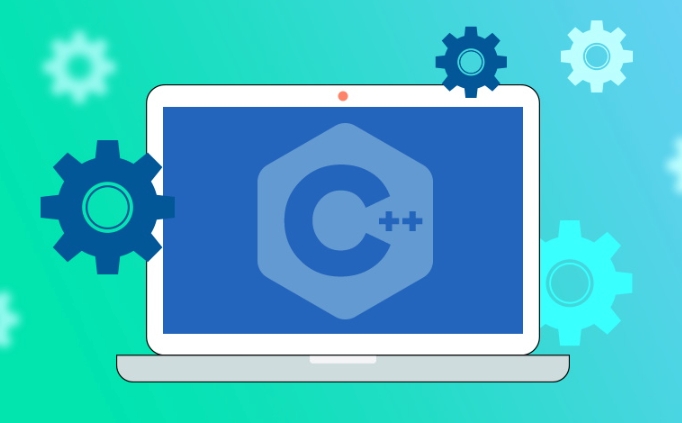To call Python code in C, you must first initialize the interpreter, and then you can achieve interaction by executing strings, files, or calling specific functions. 1. Use Py_Initialize() to initialize the interpreter and close it with Py_Finalize(); 2. Use PyRun_SimpleString to execute string code or PyRun_SimpleFile to execute script files; 3. Import the module through PyImport_ImportModule, get the function through PyObject_GetAttrString, construct parameters of Py_BuildValue, call the function through PyObject_CallObject and process the return value; 4. Pay attention to version matching, path setting, reference count management and exception check. The entire process is structured clearly but requires careful handling of errors and resource management.

Calling Python code from C programs is not actually mysterious. The key is to use the C API provided by Python. As long as it is configured properly, you can create interpreters, execute scripts, and even pass parameters in C.

Initialize the Python interpreter
To call Python in C, the first step is to initialize the Python interpreter. This step is necessary, otherwise subsequent operations will fail.

- Use
Py_Initialize()to start the interpreter - Remember to call
Py_Finalize()after use to free the resource - If your program may be initialized and closed multiple times, you need to pay attention to thread safety issues (Python does not support multi-threaded embedding by default)
Sample code snippet:
#include <Python.h>
int main() {
Py_Initialize();
// ... The code that calls Python Py_Finalize();
return 0;
} Note: You need to link Python libraries when compiling, such as using the -lpython3.10 parameter (the specific version depends on the Python version you installed).

Execute a simple Python script or statement
Once initialization is complete, you can directly run a piece of Python string code, such as printing a sentence or defining a function.
- Using
PyRun_SimpleStringis the easiest way - It is suitable for executing some statements that do not require a return value
For example:
PyRun_SimpleString("print('Hello from Python!')"); If you want to go a step further, such as executing a .py file, you can do this:
FILE* fp = fopen("script.py", "r");
if (fp) {
PyRun_SimpleFile(fp, "script.py");
fclose(fp);
}This method is suitable for situations when you want to load the entire script file, but be careful whether the path is correct and whether the file is readable.
Call Python function and get the return value
If you want to call a specific Python function and get its return value, you need a slightly more complicated operation.
The steps are as follows:
- Import module: Use
PyImport_ImportModule - Get function object: Use
PyObject_GetAttrString - Construct parameters: Create tuple or other types using
Py_BuildValue - Call function: Use
PyObject_CallObject - Process the return value: Check whether it is NULL, and then extract the actual value
For example, suppose there is a file called math_utils.py , with a function called add :
# math_utils.py
def add(a, b):
return abC calls it as follows:
PyObject* pModule = PyImport_ImportModule("math_utils");
PyObject* pFunc = PyObject_GetAttrString(pModule, "add");
PyObject* pArgs = PyTuple_Pack(2, PyLong_FromLong(3), PyLong_FromLong(4));
PyObject* pResult = PyObject_CallObject(pFunc, pArgs);
long result = PyLong_AsLong(pResult);
// result == 7 This process is quite cumbersome, but the structure is clear. The key is to handle error checks at each step, such as determining whether pModule is NULL to avoid crashes.
Frequently Asked Questions and Precautions
- Python version matching : Make sure your C compile environment is linked to the correct Python version, otherwise compatibility issues may occur.
- Path settings : If the Python script is not in the current directory, you may need to set the search path through
PySys_SetPath. - Reference Count Management : Python uses the reference counting mechanism, remember to increase or decrease references appropriately to avoid memory leaks.
- Exception handling : It is best to check whether any exceptions occur after each call to the Python API. You can use
PyErr_Occurred()to judge.
Basically that's it. Although it seems a bit troublesome, as long as you follow the process step by step, you can successfully implement the function of C calling Python.
The above is the detailed content of How to call Python from C ?. For more information, please follow other related articles on the PHP Chinese website!

Hot AI Tools

Undress AI Tool
Undress images for free

Undresser.AI Undress
AI-powered app for creating realistic nude photos

AI Clothes Remover
Online AI tool for removing clothes from photos.

Clothoff.io
AI clothes remover

Video Face Swap
Swap faces in any video effortlessly with our completely free AI face swap tool!

Hot Article

Hot Tools

Notepad++7.3.1
Easy-to-use and free code editor

SublimeText3 Chinese version
Chinese version, very easy to use

Zend Studio 13.0.1
Powerful PHP integrated development environment

Dreamweaver CS6
Visual web development tools

SublimeText3 Mac version
God-level code editing software (SublimeText3)

Hot Topics
 How do you connect to a database in Python?
Jul 10, 2025 pm 01:44 PM
How do you connect to a database in Python?
Jul 10, 2025 pm 01:44 PM
ToconnecttoadatabaseinPython,usetheappropriatelibraryforthedatabasetype.1.ForSQLite,usesqlite3withconnect()andmanagewithcursorandcommit.2.ForMySQL,installmysql-connector-pythonandprovidecredentialsinconnect().3.ForPostgreSQL,installpsycopg2andconfigu
 Python def vs lambda deep dive
Jul 10, 2025 pm 01:45 PM
Python def vs lambda deep dive
Jul 10, 2025 pm 01:45 PM
def is suitable for complex functions, supports multiple lines, document strings and nesting; lambda is suitable for simple anonymous functions and is often used in scenarios where functions are passed by parameters. The situation of selecting def: ① The function body has multiple lines; ② Document description is required; ③ Called multiple places. When choosing a lambda: ① One-time use; ② No name or document required; ③ Simple logic. Note that lambda delay binding variables may throw errors and do not support default parameters, generators, or asynchronous. In actual applications, flexibly choose according to needs and give priority to clarity.
 How to parse an HTML table with Python and Pandas
Jul 10, 2025 pm 01:39 PM
How to parse an HTML table with Python and Pandas
Jul 10, 2025 pm 01:39 PM
Yes, you can parse HTML tables using Python and Pandas. First, use the pandas.read_html() function to extract the table, which can parse HTML elements in a web page or string into a DataFrame list; then, if the table has no clear column title, it can be fixed by specifying the header parameters or manually setting the .columns attribute; for complex pages, you can combine the requests library to obtain HTML content or use BeautifulSoup to locate specific tables; pay attention to common pitfalls such as JavaScript rendering, encoding problems, and multi-table recognition.
 How to call parent class init in Python?
Jul 10, 2025 pm 01:00 PM
How to call parent class init in Python?
Jul 10, 2025 pm 01:00 PM
In Python, there are two main ways to call the __init__ method of the parent class. 1. Use the super() function, which is a modern and recommended method that makes the code clearer and automatically follows the method parsing order (MRO), such as super().__init__(name). 2. Directly call the __init__ method of the parent class, such as Parent.__init__(self,name), which is useful when you need to have full control or process old code, but will not automatically follow MRO. In multiple inheritance cases, super() should always be used consistently to ensure the correct initialization order and behavior.
 Access nested JSON object in Python
Jul 11, 2025 am 02:36 AM
Access nested JSON object in Python
Jul 11, 2025 am 02:36 AM
The way to access nested JSON objects in Python is to first clarify the structure and then index layer by layer. First, confirm the hierarchical relationship of JSON, such as a dictionary nested dictionary or list; then use dictionary keys and list index to access layer by layer, such as data "details"["zip"] to obtain zip encoding, data "details"[0] to obtain the first hobby; to avoid KeyError and IndexError, the default value can be set by the .get() method, or the encapsulation function safe_get can be used to achieve secure access; for complex structures, recursively search or use third-party libraries such as jmespath to handle.
 Python super() explained
Jul 10, 2025 pm 12:36 PM
Python super() explained
Jul 10, 2025 pm 12:36 PM
super()inPythonisusedtocallmethodsfromparentclasses,particularlyusefulinmultipleinheritance.1.Itavoidshard-codingparentclassnames,improvingcodeflexibility.2.super()followsthemethodresolutionorder(MRO)todeterminewhichparentmethodtocall.3.Inmultipleinh
 Python async for explained
Jul 10, 2025 pm 01:48 PM
Python async for explained
Jul 10, 2025 pm 01:48 PM
asyncfor is a feature used to traverse asynchronous iterable objects in Python asynchronous programming and must be used in the asyncdef function. 1. It relies on two asynchronous methods: aiter and anext, where aiter returns the asynchronous iterator itself, __anext__ returns the value of awaitable and needs to throw StopAsyncIteration to end the loop; 2. It is often used to process asynchronous data flow, such as network requests, database queries, etc., such as using aiohttp stream to read HTTP response content or obtain database records one by one through asyncpg; 3. It can also combine asynchronous yield to implement asynchronous generators, such as asynchronous counters; 4. When using
 How to continue a for loop in Python
Jul 10, 2025 pm 12:22 PM
How to continue a for loop in Python
Jul 10, 2025 pm 12:22 PM
In Python's for loop, use the continue statement to skip some operations in the current loop and enter the next loop. When the program executes to continue, the current loop will be immediately ended, the subsequent code will be skipped, and the next loop will be started. For example, scenarios such as excluding specific values ??when traversing the numeric range, skipping invalid entries when data cleaning, and skipping situations that do not meet the conditions in advance to make the main logic clearer. 1. Skip specific values: For example, exclude items that do not need to be processed when traversing the list; 2. Data cleaning: Skip exceptions or invalid data when reading external data; 3. Conditional judgment pre-order: filter non-target data in advance to improve code readability. Notes include: continue only affects the current loop layer and will not






